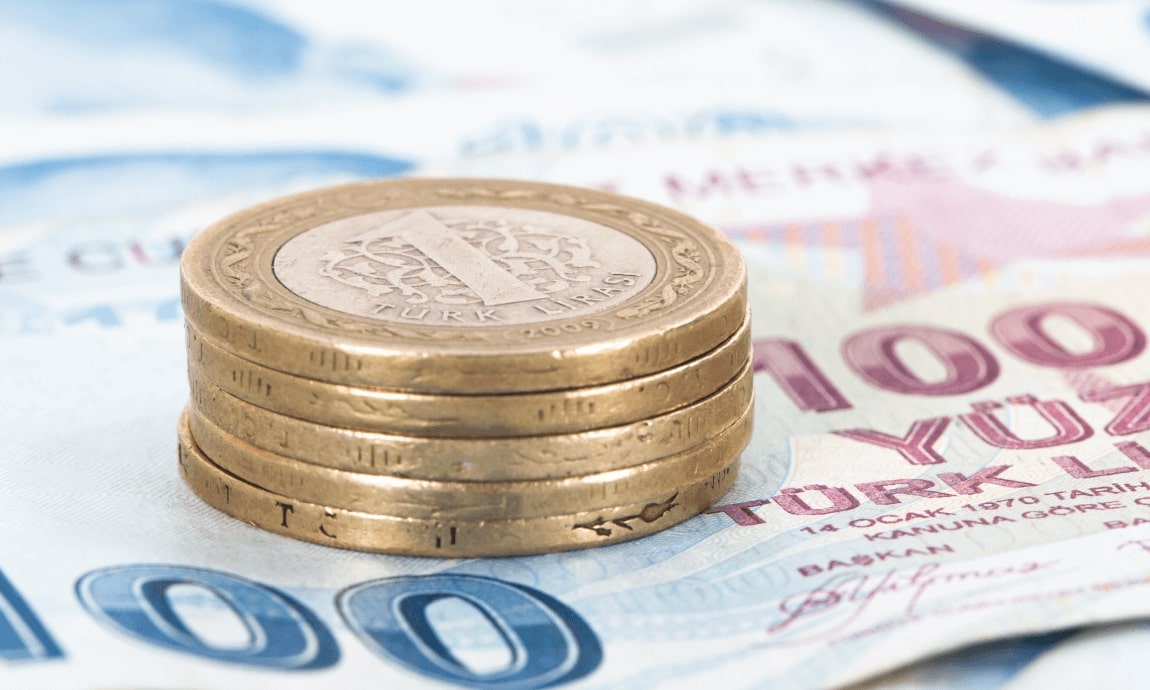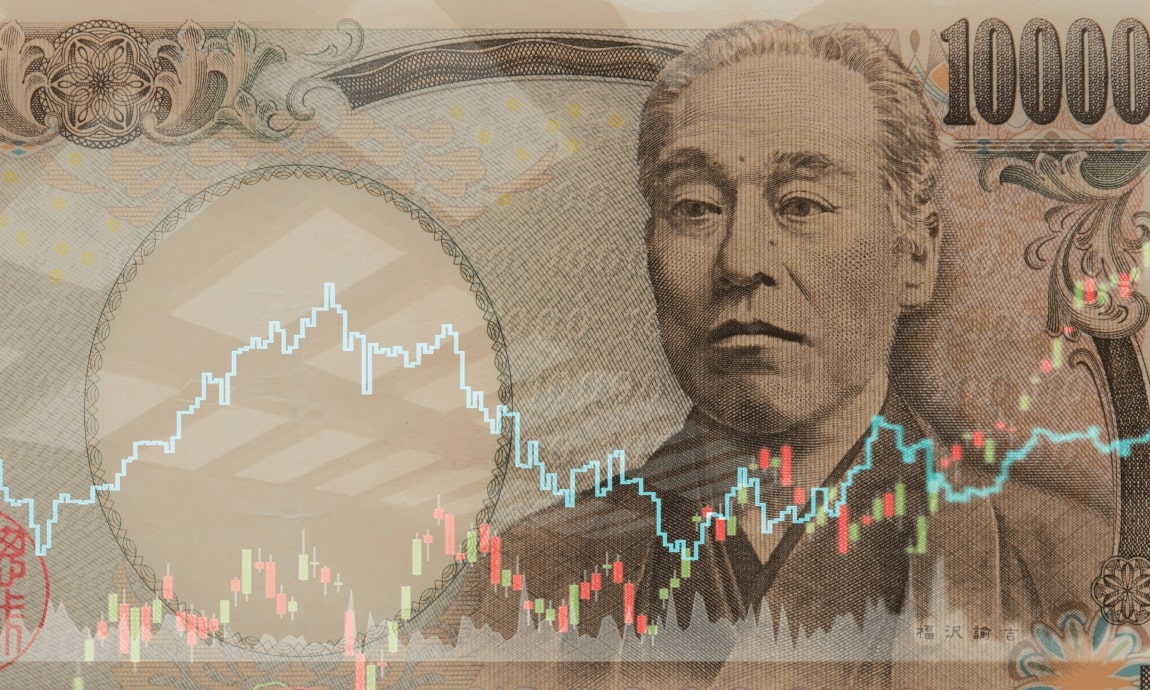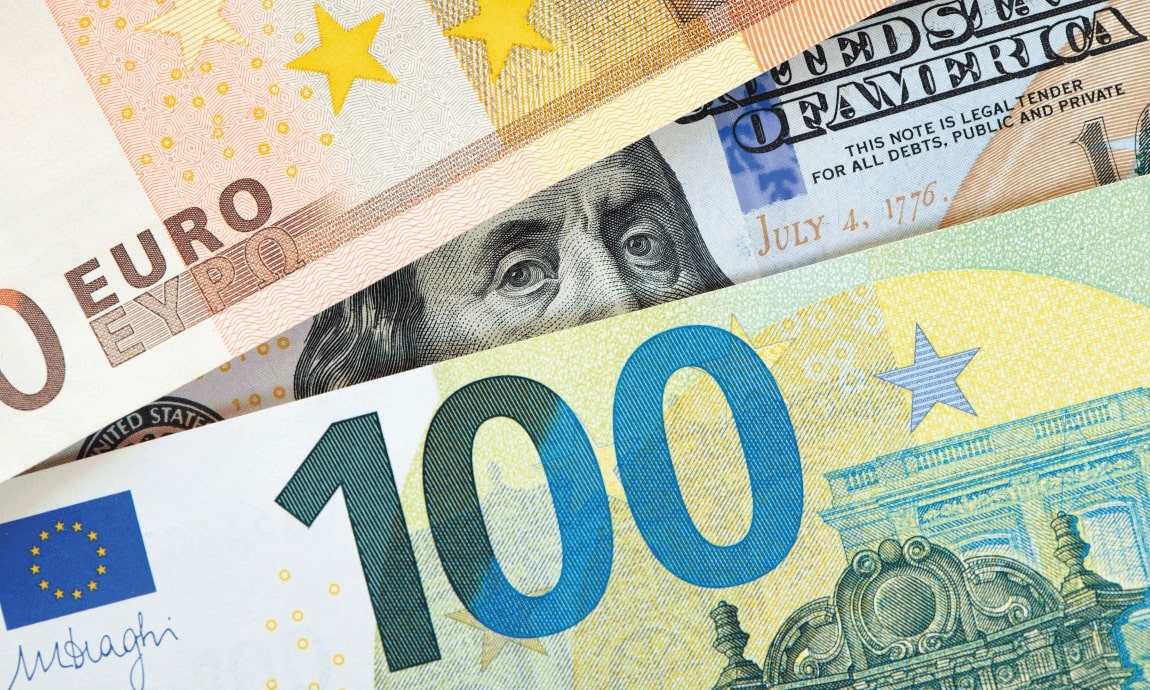In case of no agreement, we are going to have the first-ever U.S. government default that would roil the financial markets and likely lead to a global recession, which would be a negative catalyst for the demand for copper and other industrial metals.
The uncertainty surrounding U.S. debt ceiling negotiations also has been weighing on the growth-sensitive red metal. U.S. President Joe Biden and House officials have been discussing how to raise the U.S. government’s $31.4 trillion debt ceiling until the deadline of June 07.
In case of no agreement, we are going to have the first-ever U.S. government default that would roil the financial markets and likely lead to a global recession, which would be a negative catalyst for the demand for copper and other industrial metals.
U.S. Debt default risk adds pressure on Copper:
The uncertainty surrounding U.S. debt ceiling negotiations also has been weighing on the growth-sensitive red metal. U.S. President Joe Biden and House officials have been discussing how to raise the U.S. government’s $31.4 trillion debt ceiling until the deadline of June 07.
In case of no agreement, we are going to have the first-ever U.S. government default that would roil the financial markets and likely lead to a global recession, which would be a negative catalyst for the demand for copper and other industrial metals.
U.S. Debt default risk adds pressure on Copper:
The uncertainty surrounding U.S. debt ceiling negotiations also has been weighing on the growth-sensitive red metal. U.S. President Joe Biden and House officials have been discussing how to raise the U.S. government’s $31.4 trillion debt ceiling until the deadline of June 07.
In case of no agreement, we are going to have the first-ever U.S. government default that would roil the financial markets and likely lead to a global recession, which would be a negative catalyst for the demand for copper and other industrial metals.
U.S. dollars strengthen in the last session after some hawkish comments from Fed officials have also weighed on the dollar-denominated copper prices, making it more expensive for buyers with foreign currency.
U.S. Debt default risk adds pressure on Copper:
The uncertainty surrounding U.S. debt ceiling negotiations also has been weighing on the growth-sensitive red metal. U.S. President Joe Biden and House officials have been discussing how to raise the U.S. government’s $31.4 trillion debt ceiling until the deadline of June 07.
In case of no agreement, we are going to have the first-ever U.S. government default that would roil the financial markets and likely lead to a global recession, which would be a negative catalyst for the demand for copper and other industrial metals.
U.S. dollars strengthen in the last session after some hawkish comments from Fed officials have also weighed on the dollar-denominated copper prices, making it more expensive for buyers with foreign currency.
U.S. Debt default risk adds pressure on Copper:
The uncertainty surrounding U.S. debt ceiling negotiations also has been weighing on the growth-sensitive red metal. U.S. President Joe Biden and House officials have been discussing how to raise the U.S. government’s $31.4 trillion debt ceiling until the deadline of June 07.
In case of no agreement, we are going to have the first-ever U.S. government default that would roil the financial markets and likely lead to a global recession, which would be a negative catalyst for the demand for copper and other industrial metals.
Overall, the copper demand outlook is deteriorating as global growth slows in the face of rising interest rates which boost borrowing costs, and resilient Core inflation, despite the recent weakness in crude oil and natural gas prices.
U.S. dollars strengthen in the last session after some hawkish comments from Fed officials have also weighed on the dollar-denominated copper prices, making it more expensive for buyers with foreign currency.
U.S. Debt default risk adds pressure on Copper:
The uncertainty surrounding U.S. debt ceiling negotiations also has been weighing on the growth-sensitive red metal. U.S. President Joe Biden and House officials have been discussing how to raise the U.S. government’s $31.4 trillion debt ceiling until the deadline of June 07.
In case of no agreement, we are going to have the first-ever U.S. government default that would roil the financial markets and likely lead to a global recession, which would be a negative catalyst for the demand for copper and other industrial metals.
Overall, the copper demand outlook is deteriorating as global growth slows in the face of rising interest rates which boost borrowing costs, and resilient Core inflation, despite the recent weakness in crude oil and natural gas prices.
U.S. dollars strengthen in the last session after some hawkish comments from Fed officials have also weighed on the dollar-denominated copper prices, making it more expensive for buyers with foreign currency.
U.S. Debt default risk adds pressure on Copper:
The uncertainty surrounding U.S. debt ceiling negotiations also has been weighing on the growth-sensitive red metal. U.S. President Joe Biden and House officials have been discussing how to raise the U.S. government’s $31.4 trillion debt ceiling until the deadline of June 07.
In case of no agreement, we are going to have the first-ever U.S. government default that would roil the financial markets and likely lead to a global recession, which would be a negative catalyst for the demand for copper and other industrial metals.
The manufacturing conditions have been deteriorating around the world, hitting multi-month lows according to official data, dragged down by the slump in Chinese manufacturing that has begun in the second quarter of the year as China’s post-pandemic economic recovery eased, battering copper.
Overall, the copper demand outlook is deteriorating as global growth slows in the face of rising interest rates which boost borrowing costs, and resilient Core inflation, despite the recent weakness in crude oil and natural gas prices.
U.S. dollars strengthen in the last session after some hawkish comments from Fed officials have also weighed on the dollar-denominated copper prices, making it more expensive for buyers with foreign currency.
U.S. Debt default risk adds pressure on Copper:
The uncertainty surrounding U.S. debt ceiling negotiations also has been weighing on the growth-sensitive red metal. U.S. President Joe Biden and House officials have been discussing how to raise the U.S. government’s $31.4 trillion debt ceiling until the deadline of June 07.
In case of no agreement, we are going to have the first-ever U.S. government default that would roil the financial markets and likely lead to a global recession, which would be a negative catalyst for the demand for copper and other industrial metals.
The manufacturing conditions have been deteriorating around the world, hitting multi-month lows according to official data, dragged down by the slump in Chinese manufacturing that has begun in the second quarter of the year as China’s post-pandemic economic recovery eased, battering copper.
Overall, the copper demand outlook is deteriorating as global growth slows in the face of rising interest rates which boost borrowing costs, and resilient Core inflation, despite the recent weakness in crude oil and natural gas prices.
U.S. dollars strengthen in the last session after some hawkish comments from Fed officials have also weighed on the dollar-denominated copper prices, making it more expensive for buyers with foreign currency.
U.S. Debt default risk adds pressure on Copper:
The uncertainty surrounding U.S. debt ceiling negotiations also has been weighing on the growth-sensitive red metal. U.S. President Joe Biden and House officials have been discussing how to raise the U.S. government’s $31.4 trillion debt ceiling until the deadline of June 07.
In case of no agreement, we are going to have the first-ever U.S. government default that would roil the financial markets and likely lead to a global recession, which would be a negative catalyst for the demand for copper and other industrial metals.
Adding to China’s industrial weakness, commodities investors have been worrying about slowing economic growth in USA and Eurozone (mainly France & Germany), the world’s second and third economies, following the weak readings for flash manufacturing PMI, construction, and home sales.
The manufacturing conditions have been deteriorating around the world, hitting multi-month lows according to official data, dragged down by the slump in Chinese manufacturing that has begun in the second quarter of the year as China’s post-pandemic economic recovery eased, battering copper.
Overall, the copper demand outlook is deteriorating as global growth slows in the face of rising interest rates which boost borrowing costs, and resilient Core inflation, despite the recent weakness in crude oil and natural gas prices.
U.S. dollars strengthen in the last session after some hawkish comments from Fed officials have also weighed on the dollar-denominated copper prices, making it more expensive for buyers with foreign currency.
U.S. Debt default risk adds pressure on Copper:
The uncertainty surrounding U.S. debt ceiling negotiations also has been weighing on the growth-sensitive red metal. U.S. President Joe Biden and House officials have been discussing how to raise the U.S. government’s $31.4 trillion debt ceiling until the deadline of June 07.
In case of no agreement, we are going to have the first-ever U.S. government default that would roil the financial markets and likely lead to a global recession, which would be a negative catalyst for the demand for copper and other industrial metals.
Adding to China’s industrial weakness, commodities investors have been worrying about slowing economic growth in USA and Eurozone (mainly France & Germany), the world’s second and third economies, following the weak readings for flash manufacturing PMI, construction, and home sales.
The manufacturing conditions have been deteriorating around the world, hitting multi-month lows according to official data, dragged down by the slump in Chinese manufacturing that has begun in the second quarter of the year as China’s post-pandemic economic recovery eased, battering copper.
Overall, the copper demand outlook is deteriorating as global growth slows in the face of rising interest rates which boost borrowing costs, and resilient Core inflation, despite the recent weakness in crude oil and natural gas prices.
U.S. dollars strengthen in the last session after some hawkish comments from Fed officials have also weighed on the dollar-denominated copper prices, making it more expensive for buyers with foreign currency.
U.S. Debt default risk adds pressure on Copper:
The uncertainty surrounding U.S. debt ceiling negotiations also has been weighing on the growth-sensitive red metal. U.S. President Joe Biden and House officials have been discussing how to raise the U.S. government’s $31.4 trillion debt ceiling until the deadline of June 07.
In case of no agreement, we are going to have the first-ever U.S. government default that would roil the financial markets and likely lead to a global recession, which would be a negative catalyst for the demand for copper and other industrial metals.
Copper, Daily chart
Adding to China’s industrial weakness, commodities investors have been worrying about slowing economic growth in USA and Eurozone (mainly France & Germany), the world’s second and third economies, following the weak readings for flash manufacturing PMI, construction, and home sales.
The manufacturing conditions have been deteriorating around the world, hitting multi-month lows according to official data, dragged down by the slump in Chinese manufacturing that has begun in the second quarter of the year as China’s post-pandemic economic recovery eased, battering copper.
Overall, the copper demand outlook is deteriorating as global growth slows in the face of rising interest rates which boost borrowing costs, and resilient Core inflation, despite the recent weakness in crude oil and natural gas prices.
U.S. dollars strengthen in the last session after some hawkish comments from Fed officials have also weighed on the dollar-denominated copper prices, making it more expensive for buyers with foreign currency.
U.S. Debt default risk adds pressure on Copper:
The uncertainty surrounding U.S. debt ceiling negotiations also has been weighing on the growth-sensitive red metal. U.S. President Joe Biden and House officials have been discussing how to raise the U.S. government’s $31.4 trillion debt ceiling until the deadline of June 07.
In case of no agreement, we are going to have the first-ever U.S. government default that would roil the financial markets and likely lead to a global recession, which would be a negative catalyst for the demand for copper and other industrial metals.
Copper, Daily chart
Adding to China’s industrial weakness, commodities investors have been worrying about slowing economic growth in USA and Eurozone (mainly France & Germany), the world’s second and third economies, following the weak readings for flash manufacturing PMI, construction, and home sales.
The manufacturing conditions have been deteriorating around the world, hitting multi-month lows according to official data, dragged down by the slump in Chinese manufacturing that has begun in the second quarter of the year as China’s post-pandemic economic recovery eased, battering copper.
Overall, the copper demand outlook is deteriorating as global growth slows in the face of rising interest rates which boost borrowing costs, and resilient Core inflation, despite the recent weakness in crude oil and natural gas prices.
U.S. dollars strengthen in the last session after some hawkish comments from Fed officials have also weighed on the dollar-denominated copper prices, making it more expensive for buyers with foreign currency.
U.S. Debt default risk adds pressure on Copper:
The uncertainty surrounding U.S. debt ceiling negotiations also has been weighing on the growth-sensitive red metal. U.S. President Joe Biden and House officials have been discussing how to raise the U.S. government’s $31.4 trillion debt ceiling until the deadline of June 07.
In case of no agreement, we are going to have the first-ever U.S. government default that would roil the financial markets and likely lead to a global recession, which would be a negative catalyst for the demand for copper and other industrial metals.
Copper, Daily chart
Adding to China’s industrial weakness, commodities investors have been worrying about slowing economic growth in USA and Eurozone (mainly France & Germany), the world’s second and third economies, following the weak readings for flash manufacturing PMI, construction, and home sales.
The manufacturing conditions have been deteriorating around the world, hitting multi-month lows according to official data, dragged down by the slump in Chinese manufacturing that has begun in the second quarter of the year as China’s post-pandemic economic recovery eased, battering copper.
Overall, the copper demand outlook is deteriorating as global growth slows in the face of rising interest rates which boost borrowing costs, and resilient Core inflation, despite the recent weakness in crude oil and natural gas prices.
U.S. dollars strengthen in the last session after some hawkish comments from Fed officials have also weighed on the dollar-denominated copper prices, making it more expensive for buyers with foreign currency.
U.S. Debt default risk adds pressure on Copper:
The uncertainty surrounding U.S. debt ceiling negotiations also has been weighing on the growth-sensitive red metal. U.S. President Joe Biden and House officials have been discussing how to raise the U.S. government’s $31.4 trillion debt ceiling until the deadline of June 07.
In case of no agreement, we are going to have the first-ever U.S. government default that would roil the financial markets and likely lead to a global recession, which would be a negative catalyst for the demand for copper and other industrial metals.
The price of red metal fell as low as $3,61/lb on Tuesday morning, or 1.5% down, its lowest since November 2022, following steep losses of nearly 15% since intraday highs of April, after a string of disappointing economic readings from China, the world’s largest copper consumer, pointing to a weak outlook for copper demand.
Copper, Daily chart
Adding to China’s industrial weakness, commodities investors have been worrying about slowing economic growth in USA and Eurozone (mainly France & Germany), the world’s second and third economies, following the weak readings for flash manufacturing PMI, construction, and home sales.
The manufacturing conditions have been deteriorating around the world, hitting multi-month lows according to official data, dragged down by the slump in Chinese manufacturing that has begun in the second quarter of the year as China’s post-pandemic economic recovery eased, battering copper.
Overall, the copper demand outlook is deteriorating as global growth slows in the face of rising interest rates which boost borrowing costs, and resilient Core inflation, despite the recent weakness in crude oil and natural gas prices.
U.S. dollars strengthen in the last session after some hawkish comments from Fed officials have also weighed on the dollar-denominated copper prices, making it more expensive for buyers with foreign currency.
U.S. Debt default risk adds pressure on Copper:
The uncertainty surrounding U.S. debt ceiling negotiations also has been weighing on the growth-sensitive red metal. U.S. President Joe Biden and House officials have been discussing how to raise the U.S. government’s $31.4 trillion debt ceiling until the deadline of June 07.
In case of no agreement, we are going to have the first-ever U.S. government default that would roil the financial markets and likely lead to a global recession, which would be a negative catalyst for the demand for copper and other industrial metals.
The price of red metal fell as low as $3,61/lb on Tuesday morning, or 1.5% down, its lowest since November 2022, following steep losses of nearly 15% since intraday highs of April, after a string of disappointing economic readings from China, the world’s largest copper consumer, pointing to a weak outlook for copper demand.
Copper, Daily chart
Adding to China’s industrial weakness, commodities investors have been worrying about slowing economic growth in USA and Eurozone (mainly France & Germany), the world’s second and third economies, following the weak readings for flash manufacturing PMI, construction, and home sales.
The manufacturing conditions have been deteriorating around the world, hitting multi-month lows according to official data, dragged down by the slump in Chinese manufacturing that has begun in the second quarter of the year as China’s post-pandemic economic recovery eased, battering copper.
Overall, the copper demand outlook is deteriorating as global growth slows in the face of rising interest rates which boost borrowing costs, and resilient Core inflation, despite the recent weakness in crude oil and natural gas prices.
U.S. dollars strengthen in the last session after some hawkish comments from Fed officials have also weighed on the dollar-denominated copper prices, making it more expensive for buyers with foreign currency.
U.S. Debt default risk adds pressure on Copper:
The uncertainty surrounding U.S. debt ceiling negotiations also has been weighing on the growth-sensitive red metal. U.S. President Joe Biden and House officials have been discussing how to raise the U.S. government’s $31.4 trillion debt ceiling until the deadline of June 07.
In case of no agreement, we are going to have the first-ever U.S. government default that would roil the financial markets and likely lead to a global recession, which would be a negative catalyst for the demand for copper and other industrial metals.
Copper slumped the most in seven months as weaker-than-expected macroeconomic data in China, Europe, and the USA, fears of a global recession, U.S. default risk, and the rebounding dollar have temped the demand outlook for the metal used in manufacturing and construction.
The price of red metal fell as low as $3,61/lb on Tuesday morning, or 1.5% down, its lowest since November 2022, following steep losses of nearly 15% since intraday highs of April, after a string of disappointing economic readings from China, the world’s largest copper consumer, pointing to a weak outlook for copper demand.
Copper, Daily chart
Adding to China’s industrial weakness, commodities investors have been worrying about slowing economic growth in USA and Eurozone (mainly France & Germany), the world’s second and third economies, following the weak readings for flash manufacturing PMI, construction, and home sales.
The manufacturing conditions have been deteriorating around the world, hitting multi-month lows according to official data, dragged down by the slump in Chinese manufacturing that has begun in the second quarter of the year as China’s post-pandemic economic recovery eased, battering copper.
Overall, the copper demand outlook is deteriorating as global growth slows in the face of rising interest rates which boost borrowing costs, and resilient Core inflation, despite the recent weakness in crude oil and natural gas prices.
U.S. dollars strengthen in the last session after some hawkish comments from Fed officials have also weighed on the dollar-denominated copper prices, making it more expensive for buyers with foreign currency.
U.S. Debt default risk adds pressure on Copper:
The uncertainty surrounding U.S. debt ceiling negotiations also has been weighing on the growth-sensitive red metal. U.S. President Joe Biden and House officials have been discussing how to raise the U.S. government’s $31.4 trillion debt ceiling until the deadline of June 07.
In case of no agreement, we are going to have the first-ever U.S. government default that would roil the financial markets and likely lead to a global recession, which would be a negative catalyst for the demand for copper and other industrial metals.
Copper slumped the most in seven months as weaker-than-expected macroeconomic data in China, Europe, and the USA, fears of a global recession, U.S. default risk, and the rebounding dollar have temped the demand outlook for the metal used in manufacturing and construction.
The price of red metal fell as low as $3,61/lb on Tuesday morning, or 1.5% down, its lowest since November 2022, following steep losses of nearly 15% since intraday highs of April, after a string of disappointing economic readings from China, the world’s largest copper consumer, pointing to a weak outlook for copper demand.
Copper, Daily chart
Adding to China’s industrial weakness, commodities investors have been worrying about slowing economic growth in USA and Eurozone (mainly France & Germany), the world’s second and third economies, following the weak readings for flash manufacturing PMI, construction, and home sales.
The manufacturing conditions have been deteriorating around the world, hitting multi-month lows according to official data, dragged down by the slump in Chinese manufacturing that has begun in the second quarter of the year as China’s post-pandemic economic recovery eased, battering copper.
Overall, the copper demand outlook is deteriorating as global growth slows in the face of rising interest rates which boost borrowing costs, and resilient Core inflation, despite the recent weakness in crude oil and natural gas prices.
U.S. dollars strengthen in the last session after some hawkish comments from Fed officials have also weighed on the dollar-denominated copper prices, making it more expensive for buyers with foreign currency.
U.S. Debt default risk adds pressure on Copper:
The uncertainty surrounding U.S. debt ceiling negotiations also has been weighing on the growth-sensitive red metal. U.S. President Joe Biden and House officials have been discussing how to raise the U.S. government’s $31.4 trillion debt ceiling until the deadline of June 07.
In case of no agreement, we are going to have the first-ever U.S. government default that would roil the financial markets and likely lead to a global recession, which would be a negative catalyst for the demand for copper and other industrial metals.







